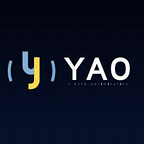On July 30, 2015, the world’s first open-source public blockchain platform with smart contract functionality, Ethereum, was born. It provides decentralized virtual machine services through its dedicated digital token ETH, handles peer-to-peer contracts, and is the first Turing-complete blockchain platform. The birth of Ethereum opened the blockchain 2.0 era, and smart contracts began to flourish in the blockchain world, opening the door for building various types of upper-level applications, bringing people to a more free, more decentralized, and more The future of trust.
In a twinkling of an eye, Ethereum is already 4 years old. How has the underlying technology of the blockchain been built over the past four years? Let’s take a look at the things you have to know about blockchain infrastructure.
1.Decentralization
In the blockchain technology, there is a famous “impossible triangle” theory, namely security, decentralization, and scalability, which cannot be satisfied at the same time. Decentralization is the most essential feature of the blockchain, which means that transactions can be directly traded between individual nodes on the chain, eliminating intermediate processes such as authorities and third-party platforms. The entire network can achieve democratic autonomy. Bitcoin is a typical representative of decentralization. It pursues “decentralization” and “security”, but it is somewhat urgent in terms of scalability.
2. High scalability
According to Vitalik, the founder of Ethereum, “extensibility should be ranked first in terms of decentralization, scalability and security. The scalability problem has become the grave of many systems. This is a major one. Difficult challenge. “Extensibility mainly refers to the carrying capacity of the network and the speed of processing transactions. The problem of scalability has always been a drawback of Ethereum. As long as the number of Dapps on the network increases, the entire network is extremely vulnerable. To this end, Ethereum has designed a blockchain fragmentation storage scheme to improve the carrying capacity of the entire network and reduce the pressure on node storage.
3. Ecological construction
Ecological construction is an important part of the operation of the major underground chains. Good ecological construction can guarantee the development of technology. Take EOS, although EOS has a high reputation, the number of users is not small, and it has raised enough funds to support its community operations, but it is still recruiting more advanced technology and operational talent. Besides, a reasonable consensus mechanism is also very important for ecological construction, which can greatly improve the efficiency of community consensus verification.
To promote the development of the underlying technology of the blockchain and promote the construction of industrial infrastructure, the blockchain basic service platform has emerged. Among them, the most worthy of expectation is the YAO Network based on Blockchain as a Service (Baas).
